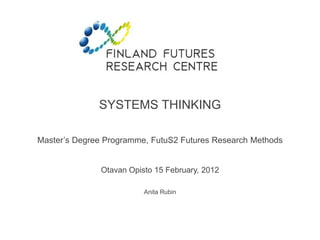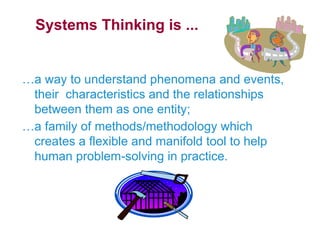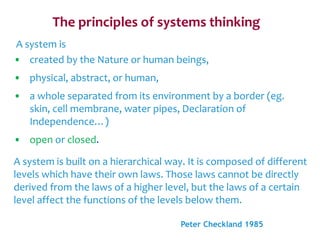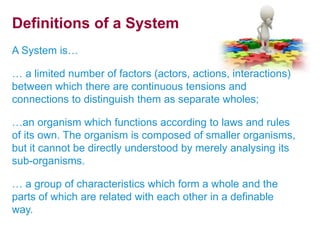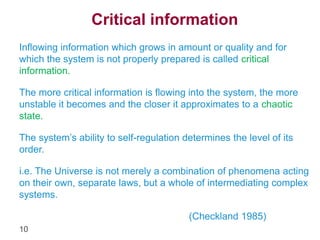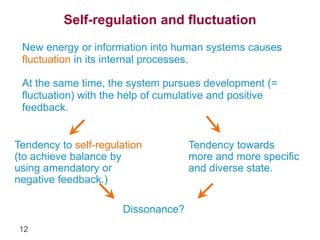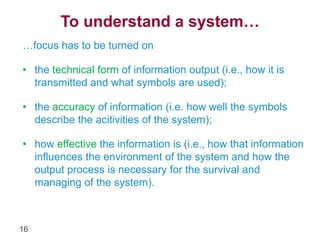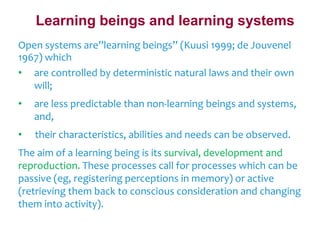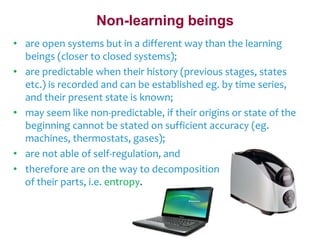The document discusses systems thinking and key concepts about systems. It defines a system as (1) created by nature or humans, (2) physical, abstract, or composed of humans, (3) separated from its environment by a border, and (4) either open or closed. Systems are hierarchical and composed of subsystems. Open systems receive inputs from their environment, transform those inputs, produce outputs, and self-regulate to maintain homeostasis. Feedback loops are important for self-regulation and development. Learning systems can change over time based on experiences, while non-learning systems lack this ability.
